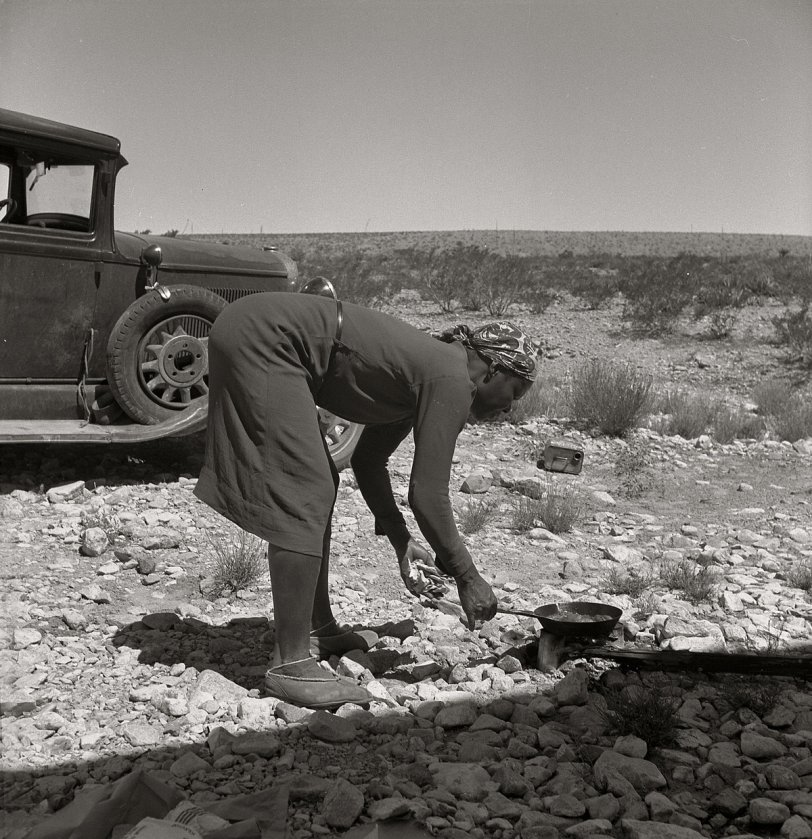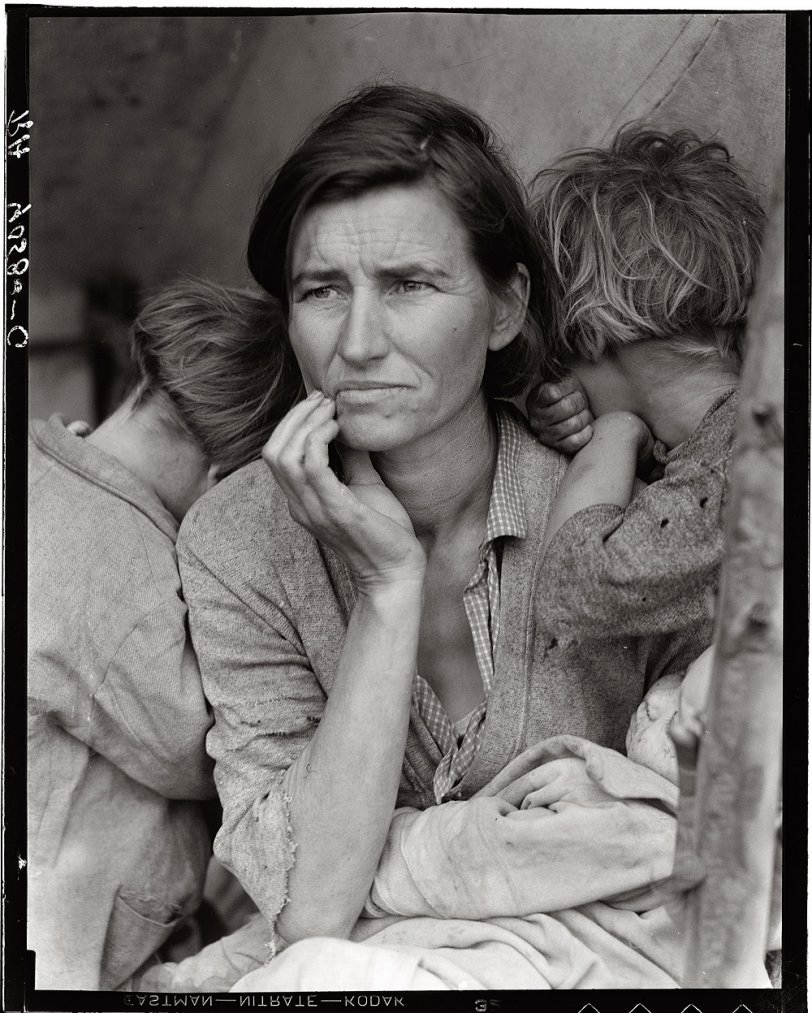Article by Bruce Berman
The Atlantic Monthly just published an article about the FSA (Farm Security Administration) and how minority Americans (African-Americans and Latino Americans) were ignored by the FSA during its four year run.
It’s title is: Whitewashing the Great Depression.
It is factually misinforming.
Four years ago I co-authored (with my colleague Dr. Mary Lamonica) an article titled, “The Photographer as Cultural Outsider.”
It focused on Russell Lee and his 1949 project shot for George I. Sanchez who was the first Latino Dept. Head at UT-Austin and one of the early Civil Rights warriors in LULAC (League of United Latin American Citizens). Sanchez had created The Study of the Spanish-Speaking People of Texas project. Lee, of course, was an FSA shooter of great renown and prestige (and later OWI/Office of War Information). He had settled after his WW 2 service in Austin, Texas, the same city as Sanchez’.
Our article was a little more nuanced than the Atlantic piece and delved into the issue of cultural identity of the photographer (or writer or filmmaker) in shaping not only his/her viewpoint but how various ethnic subjects react to a photographer.

This is a real issue, almost existential in nature.
Can a Black photographer, for example, really know his Caucasian subject as well as a Caucasian photographer would? Reverse the ethnicities and you have the gist of the article.
In fact, if you study FSA, there was a lot of work done on the Black and Hispanic community, particularly in the south and Texas specifically, about the agriculture sector. Roy Stryker, the Director of FSA, was a Colombia U. Economist, and a former student of Rex Tugwell (appointed by him to create the “Historic Section” of the Resettlement Administration (RA), part of the Agriculture Department, and was one of FDR’s closest confidants and shapers of New Deal social policy.
Remember, the FSA was distributing their work to the media, mostly newspapers and magazines (some traveling exhibitions to selected cities). The media -The Atlantic for example- apparently chose not to publish much of the volumunous minority coverage that FSA distributed.
Ironical, then, that 84 years later, the Atlantic’s Sarah Boxer decides, yep, the FSA must have been racist, not, of course, the media that overlooked this stellar body of work.
It wasn’t the FSA that anointed Migrant Mother and not the African-American cook (see photo above). They delivered. The media stonewalled. Then, as now, the privileged seat of being the arbiter of what is newsworthy seems to come with blinders and with selective interpretation of the honorable bylaws of traditional journalism.
Stryker and his mission-driven shooters (including, and especially, Gordon Parks!) did not ignore this part of the Depression. In fact they focused on it. They must have been somewhat deflated -if not insulted- by how this part of their work was, if not ignored, deemphasized. Almost all of the photographers hired by Stryker were vigorous early Civil Rights advocates. You can see it in their work. They felt they were advocates for the poor, of all ethnicities and Races. If they had a political leaning it was to lean toward the defense of the downtrodden, not against any selected ethnic group. The Atlantic article singles out the famous Migrant Mother photo, claiming that its wide distribution proves that the FSA was Caucasian-centric, ignoring the magic quality that some photos have to burrow their way into the soul of the viewer, the universality of photography that reaches all of humanity.
The extensive coverage of minorities (what was essentially a minority -impoverished Caucasians) was not just a notion coming from the photographers. They were instructed to do so by Stryker, even to the extent of him issuing each shooter a script. His instruction? Make a portrait of America and he meant all of America: Black, Caucasian, Latino, Asian, women… all of America.
To use this photograph to make a point about Whitewashing the Depression, this photograph that illustrates all the pain and anguish of poverty itself, universally, for all generations, is ludicrous.
In fact, Stryker didn’t set out to do this portrait of America so that images of one group or the other would languish in a file only to be discovered by a so-called social justice warrior, eighty four years later. Stryker, Tugwell, the entire New Deal were the tip of the spear for what became the Civil Rights Movement. The Atlantic writer’s thesis is completely wrong. It’s not only historically wrong. It’s bad journalism.

In fact, Lange was photographing people dispossessed by a ruthless banking system and an ecological tragedy (the Dust Bowl), displaced from their means of income (mostly small farming), and rendered helpless to climb out of the long economic descent of the Great Depression.
She wasn’t photographing White Privilege. She found, in the person of Florence Owens Thompson, aka, Migrant Mother, a universal symbol of agrarian blight and poverty for people of all colors, all encountering a world gone awry, all suffering, all enduring.
In essence, she was photographing the universality of poverty and for them that scourge was colorblind.
We have to look elsewhere for the dishonor of lack of willful ethnic awareness. Inevitably we have to look at the media. Stryker sent his voluminous and “eye-opening” photos out. If they were ignored by the publications of that era, don’t blame the messenger (or creators).
Full disclosure: The FSA has been my photographic cornerstone since I began shooting in 1968 and started working in the multiethnic neighborhood of Uptown, in Chicago in the early 1970s. It was, specifically the FSA’s handling of downtrodden Caucasians (especially Appalachians) and the Black and Latino communities that motivated me to follow their path. I was inspired by the FSA’s inclusive approach to the reportage of America and its people and wanted to follow that ideal. I must have missed the point the Atlantic article posits, the part about whitewashing the Depression.
The article is, in the vernacular of now, “fake news,” information slanted from an individual writer’s (or an organization’s) viewpoint to make a political point, not from a balanced view, based upon credible -and often disagreeing- sources, aiming to inform an interested public, ignoring one of the cardinal rules of all Journalism 101 classes: “There are two sides to every story and usually the truth is found somewhere in between them.”
Roy Stryker and his dedicated band of concerned photographers would, if here now, be disappointed and want to set the record straight.
I think they’d be Googling “Atlantic Monthly +Letters to the Editor+Contact Info.”
